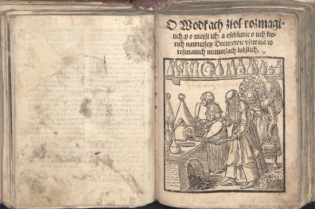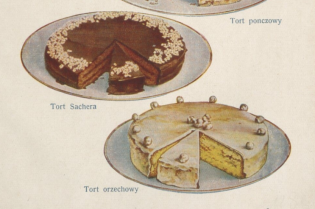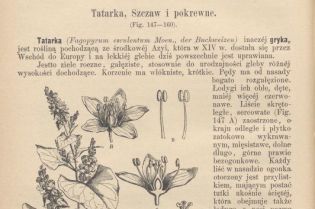Products from the Malopolska Region with a Protected Geographical Indication
There are 42 products on the list of Polish names registered in the EU system of Protected Designations of Origin and Protected Geographical Indications as well as Traditional Specialties Guaranteed. Many of them are specialties reported by Malopolska Region manufacturers.
In 1992, the European Union provided special protection for manufacturers (oftentimes small ones) producing food related to the culinary tradition or characteristics of the place where it is made. In order to make them stand out, a European labeling system was created to emphasize the high quality of the products and protect producers against unfair competitors.
There are two categories of products: regional products of known origin covered by the Protected Designation of Origin and Protected Geographical Indication and traditional products covered by the designation, Traditional Specialty Guaranteed.
From among regional products, as many as 13 are manufactured in the Malopolska Region: Podhale Bryndza (a soft cheese), Piękny Jaś (beans from the Dunajec Valley), Zator carp, Oscypek smoked cheese, redykołka (a type of cheese), Prądnicki bread, Łącko apples, Podhale lamb, Lisiecka sausage, Krakowski Obwarzanek (round shaped bread), Sechlońska suska (dried and smoked prunes from Sechna), Semi-dry cured pork sausage Piaszczańska saussage) and Galician garlic.
The Protected Designation of Origin (PDO) is a European mark awarded to regional products of exceptional quality, with a name referring to the place where it is manufactured and emphasizing their relationship with this place. All raw materials needed to manufacture such a product come from a specific geographical area and all production phases take place in that area. The PDO designation is found on the following 9 Polish products: Podhale Bryndza, Piękny Jaś beans from the Dunajec Valley, Wrzawa beans, Zator carp, honey from the Sejneńszczyzna/Łoździejszczyzna area, Oscypek cheese, Podkarpacie honeydew honey, redykołka cheese and sour cherries from along the Vistula river.
The Protected Geographical Indication (PGI) is a European mark awarded to regional products of exceptional quality, with a name referring to the place where it is manufactured and emphasizing their relationship with this place. The PGI designation also indicates that at least one stage in the product's development must take place in the area to which its name refers. So far, 23 products have been distinguished in Poland with the PGI designation: Kalisz wafers, Lublin cebularz (bread with onions and poppy seeds), Prądnik bread, Korczyn beans, Grójec apples, Łącko apples, Podhale lamb, Lisiecka sausage, Kołocz śląski (Silesian cake), Drahim honey, Kurpie honey, Bory Dolnośląskie heather honey, Krakow bagel (Obwarzanek krakowski), St. Martin's croissant, homemade Korycin cheese, Sechlońska suska (dried and smoked prunes from Sechna), Szydłów plums, Kashubian strawberries /kaszëbskô malëna, Wielkopolska fried cheese, Silesian krupniok sausage, steamed Wielkopolska white sausage, Semi-dry cured pork sausage (Kiełbasa piaszczańska), Galician garlic.
Traditional Specialities Guaranteed (TSG) is a European mark of quality awarded to products bearing a traditional name, referring to its specific character or traditionally used for this product. A product with the TSG mark must be made from traditional raw materials, according to a traditional recipe handed down from generation to generation or by traditional methods. To date, 10 products have been awarded the TSG mark in Poland: półtorak mead, dwójniak mead, trójniak mead, czwórniak mead, kabanosy (long dried sausage), juniper sausage, hunter’s sausage, rydzowy oil, pierekaczewnik pie, and Krakowska (dried pork Polish sausage).
Products from the Malopolska Region with a Protected Geographical Indication
Galician garlic
The name Galician garlic is taken from the place of its production, the former area of Galicia – on Polish territory, which during the years 1774–1918 was part of the Austrian partition. The geographical area of Galician garlic production is distinguished by extremely fertile soil with a high pH and an extremely early vegetation period, as well as a purple-pink coloration of the outer peel, with a large spherical bulb (diameter not less than 50 mm) and a small number of cloves in the bulb in the outer whorl (6-9 pieces), thanks to which, the size of a single clove is also larger, as compared to other types of garlic. In addition, garlic grown in this area has a higher content of alliin (a compound responsible for the characteristic taste of garlic - on average 5%), as compared to the same type of garlic grown in other parts of the country.
For years, Galician garlic has been famous for its unique taste. According to a legend, merchants coming to Słomniki for fairs and markets supplied themselves with a lump of salt and a clove of garlic. The significant fame of this garlic can also be evidenced by the mention of it in the memoirs of Jan Chryzostom Pasek, who humorously wrote that it was because of garlic that Jan Rakoczy, the prince of Transylvania invaded Polish lands in 1657.
Piaszczańska sausage
Piaszczańska sausage is a semi-dried, smoked pork sausage, cured and marinated with herbs and rock salt. As much as 90% of class I meat is used for its production, whereas for other similar products this value usually does not exceed 60%. In addition, it is produced only from chilled, fresh pork (used 24-96 hours following slaughter).
The name of the Piaszczańska saussage comes from the place of its production, a former village near Krakow, which has been within the administrative boundaries of the city of Krakow and called Piaski Wielkie since 1940. The inhabitants of Wieliczka and Świątniki Górne municipalities also produced this type of sausage. According to both historical and local sources, the population living in these areas was called Kijacy.
Prądnicki bread
Prądnicki bread is baked from rye sourdough. It comes in two sizes: in the smaller version it weighs about 4.5 kg and is up to 65 cm long and 35 cm wide with a height of up to 15 cm, while its larger version weight is 14 kg, with a length of one meter width of half a meter.
Regardless of its size and shape, the Prądnicki bread always has a 6 mm thick brown or dark brown uniform crust, covered with a layer of rye bran. In addition to wheat, rye flour, bran, yeast, drinking water, salt and cumin, boiled potatoes or potato flakes are also added to the dough.
The history of this bread is associated with two villages near Kraków - Prądnik Biały and Prądnik Czerwony. For the first time, the name of Prądnik bread was mentioned in a letter dated 1421, when Albert, the bishop of Krakow, gave his cook Świętosław Skowronek a piece of land in Prądnik, at the same time obliging him to provide the so-called rye bread for the episcopal table. The mention of Prądnicki bread is also found in the letters of Jan Długosz. Prądnik bread was very popular until the beginning of the 20th century, whereas during the times of the Polish People's Republic its production was almost discontinued (at that time it was only possible to buy it at the market in Kleparz). Baking was resumed after 1989.
Łącko apples
The term "Łącko apples" refers to specific varieties of apples from the Łącka Basin. The fruits are characterized by high acidity, juiciness and aroma, as well as high firmness of the flesh and a greater and more pronounced blush than apples of a given species from other places. They also "do not rust" - that is, do not get brown when peeled. To a large extent they owe their characteristics to the microclimate of the Łącka Basin (i.e. large temperature fluctuations between day and night), its soil and landform features.
According to historical sources, dried apples from this region were shipped down the Dunajec River to the Vistula River and then to Gdansk as early as in the 12th century, from where they reached the tables of nobility throughout Europe. According to local legend, the development of fruit growing was due to two parish priests. The first required the brides making announcements to ensure that at least ten new fruit strains were planted. However, instead of having his parishioners recite ‘hail Marys’ after confession he ordered them to repent of each of their grave sins by planting one apple tree.
Only the Idared, Jonagold, Champion, Ligol, Golden Delicious, Gala, Boskoop, Red Boskoop, Elise, Early Geneve, Topaz, Lobo, Rubin, Gloster and Jonagored apples belonging to the Extra or first degree of specific acidity and firmness can be called Łącko Apples and also when grown in the following municipalities: Łącko, Podegrodzie and Stary Sącz in the Nowy Sącz poviat and the Łukowica municipality in the Limanowa poviat, in the Malopolska Region.
Podhale lamb
The name "Podhale Lamb" may be used only for meat and offal of lamb breeds of Polish mountain sheep, Polish mountain sheep of colored variety or Podhale sheep, whose age has not exceeded 60 days. They are the so-called milk carcasses, because the lambs are fed exclusively on their mother's milk at this age.
The certificate can only be given to the meat of lambs born and raised in the Nowy Targ and Tatra poviats (in the whole area) and in the areas of certain municipalities in the Cieszyn powiat (Istebna municipality) and Żywiec poviat (the municipalities of: Milówka, Węgierska Górka, Rajcza, Ujsoły, Jeleśnia, Koszarawa), Sucha Beskidzka (municipalities: Zawoja, Bystra Sidzina), Limanów (municipalities: Niedźwiedz and part of Kamienica municipality, Mszana Dolna municipality - subdivisions: Olszówka, Raba Niżna, Łostówka, Łętowe and Lubomierz) and Nowy Sącz (municipalities: Piwniczna, Muszyna and Krynica). Also the fodder used to feed sheep must come from these areas. The only exception is nourishing concentrate which complements the sheep's diet during the winter.
Liszki sausage
The Liszki sausage is a smoked pork sausage produced in two villages near Kraków - Liszki and Czernichów. It is between 4.5 and 5.5 cm in diameter (on average above 5 cm). It is characterized by the high degree of leanness of its meat - in a cross section you can see large pieces of ham, surrounded by the stuffing. Ham makes up the majority of the sausage composition. The pork from which Liszki is made has a number of additional restrictions - for example, meat from animals that are susceptible to stress is excluded from production (hormones released during stress change the taste of pork). In addition, the content of class I meat is 85% in the sausage (class II is 10%, and class III may not exceed 5%). The only spices used for production are pickling salt, fresh garlic and white ground pepper.
The area around Liszki and Czernichów boasts of a centuries-old butcher tradition. The Liszki sausage itself is derived from Krakow sausage, and has been known under its own name since the 1930s. After World War II, local sausage producers founded the Municipal Cooperative in Liszki, in which until 1989 the Liszki sausage was made. After the political changes, production was continued by private butchers.
Krakowski Obwarzanek (round shaped bread)
Krakowski Obwarzanek is made from a combination of wheat flour (it is possible to use up to 30% rye flour), fat, sugar, yeast, salt and water. The production of the bagels takes place in several stages. The risen dough is formed into long rolls, so-called sulki, of which 2-3 pieces are twisted together and closed in a ring. The molded bagels with a diameter of several centimeters (12-17 cm) are set aside to rise, after which they are immersed in boiling water for a moment and cooked, i.e. boiled, until they float to the surface. Then, after draining, they are decorated with poppy seeds, salt, sesame or other sprinkles and then baked.
The Obwarzanek strong relationship with Krakow is evidenced by many preserved documents, the oldest of which are the fourteenth-century bills from the court of Władysław Jagiełło and Jadwiga, in which on March 2, 1394 it was written, For the queen lady, pro circulis obrzanky 1 grosz. Initially, the bagels could be baked only by bakers appointed by guilds and only made during Lent. Over time, the names of people who could bake bagels during a given period were randomly drawn, and their place in the line could be resold. Obwarzanek were sold from bakeries, while from the 19th to the mid-20th centuries they were sold on the street straight from wicker baskets. Only bagels baked within the administrative boundaries of the city of Krakow and the Krakow and Wieliczka poviats can be certified.
Suska sechlońska
Suska sechlońska is a dried and smoked plum (pitted or with a pit). "Suska" means "dried", and "sechlońska" comes from the name of the town of Sechna, located in the municipality of Laskowa, Malopolska Region, from which the tradition of plum drying originates. For drying, varieties of typical domestic plum, the so-called Hungarian and its derivatives - Promis, Tolar, Nektawit, as well as Valjevka and Stanley, are used, as they are easily smoked. The fruits of these varieties have a high sugar content and low water content. Selected plums are arranged on the so-called canes, i.e. grates constructed of long narrow boards. It is important that each plum has access to air. For this reason, the plum layer should not exceed 20 cm.
Plums are dried and smoked with hot smoke at a temperature of 45 to 60°C in smoke from beech, hornbeam, birch and fruit trees, for example plum trees. Smoking lasts from 4 to 6 days.
Plum drying around Sechna has a centuries-old tradition. According to preserved documents, during the 18th century many fruit trees grew in this village and in the estate of the Poor Clares. According to the preserved legend, the idea of drying plums came from a nameless priest who ordered his parishioners, as compensation for sins, to plant fruit trees. And because cherries or pears grew poorly in these lands, he advised them to plant plum trees. The faithful, of course, willingly performed their penance, however, when the fruit on the trees ripened, they began to manufacture slivovitz spirits using them. This, of course, did not please the pious priest, therefore he ordered the fruit be dried with smoke – which when processed in this way, they could not be converted into alcohol. The geographical area in which Suska is produced includes four municipalities: Laskowa, Iwkowa, Łososina Dolna and Żegocina.










